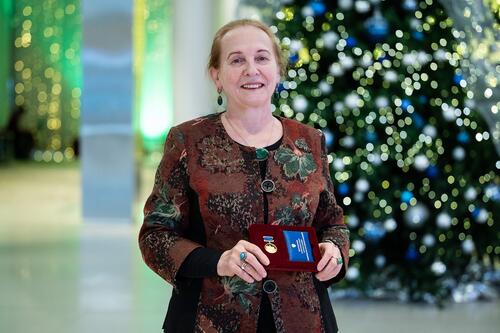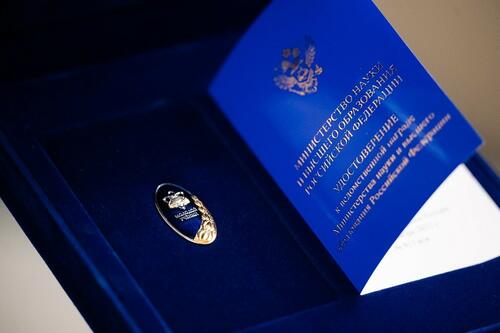New Methods to Investigate Nuclear Materials
Ian Farnan
Department of Earth Sciences
& Cambridge Nuclear Energy Centre
University of Cambridge, UK
The ability of nuclear magnetic resonance (NMR) to report accurate atomic site populations in crystalline or amorphous materials equally has been used to advance solid-state science significantly. In the area of nuclear materials, this type of element specific and quantitative site population information is crucial to the verification of increasingly sophisticated and crucial models of nuclear fuel and waste form behaviour. The challenge is to implement magic angle spinning techniques to achieve high-resolution, solid-state spectra whilst operating safely with materials with high radiotoxicity. One of the major issues in nuclear materials is the effect of radiation damage either from nuclear fission in fuels or actinide alpha decay in nuclear waste forms. We have implemented, at Pacific Northwest National Laboratory, a triple containment protocol within the rotor to undertake relatively slow (5 kHz) magic angle spinning experiments on actinide transuranic materials when the actinide magnetic moment is zero or small. Using this approach, we have been able to determine quantitative numbers of permanently displaced atoms due to alpha radiation damage in ceramic zircon through 29Si spin counting in samples containing 238Pu & 239Pu with an absolute activity of 5.5 GBq (> 40 GBq/g specific activity). The numbers of displaced atoms (~5000) per event was found to be significantly higher than predicted by traditional radiation damage codes
When significant magnetic moments exist on the actinide atom, such as the 5f2 configuration of U4+, high sample rotation speeds are required to narrow the broadening due to paramagnetic effects. Multiple levels of containment cannot be accommodated within the reduced rotor diameters that are needed when such rotation speeds are required. A solution has been developed at the European Commission Joint Research Centre which has ben made available through the EC Transnational Access programme EURACT-NMR (www.euract-nmr.eu). In this approach, narrow bore versions of small diameter MAS probes are operated within an alpha glove box that extends into the bore of the NMR magnet thus achieving an external containment of the entire NMR probe. This allows rotation speeds of up to 67 kHz to be achieved on actinide samples with a 1.3 mm rotor without internal containment. 17O spectra of actinide solid solutions show the clear resolution of oxygen atoms with differing numbers of uranium and thorium neighbours. Examples will be shown where this technique is providing unique information on actinide oxides and the characterisation of uranium carbide fuels.
Curriculum Vitae
Ian Farnan
Reader in Earth & Nuclear Materials
University of Cambridge, Department of Earth Sciences, Downing Street, Cambridge, CB2 3EQ
Telephone: (01223) 333431, Fax: (01223) 333450 e-mail: if203@cam.ac.uk
Date of Birth: 10th September 1958 Nationality: British
Research Interests
Current research involves combining an applied approach with fundamental atomic scale methods to the production and durability of the primary barriers to radionuclide release from nuclear wasteforms (glass, SNF, ceramic waste-forms) and methods of waste minimization through re-processing using molten salts and production of appropriate halide tolerant waste forms. In particular, developing a mechanistic understanding of the alteration of ultimate waste forms in water and subsequent radionuclide release. A special interest is the effect of radiation damage on the durability of these materials. Strong advocate for testing models of radiation damage with experiments on active materials. This involves the ‘nuclearisation’ of modern analytical techniques, particularly nuclear magnetic resonance.
Professional Activities
Chair Cambridge Nuclear Energy Centre, July 13 — present.
Coordinator Euratom FP7 programme 269923: EURACT-NMR Oct ’10-Oct ‘13
Consortium leader Nuclear Decommissioning Authority-EPSRC research programme on Direct Disposal of UK AGR spent fuel Apr ’11- Mar ‘15
Member Nuclear Decommissioning Authority Research Strategy Review Committee (Engineered Barriers) July 2013
Organiser Joint Geological Society/ Mineralogical Society Conference on Nuclear Waste Management 27th-29th September 2010, Cambridge
Consultant Expert, European Commission Joint Research Centre, Institute for Transuranic Elements (ITU) Karlsruhe, Germany.
Member Scientific Advisory Committee, Environmental and Molecular Sciences Directorate Pacific Northwest National Laboratory, Richland, WA, USA (‘07-‘14)
Governing Board member EC FP7 F-Bridge: Innovative Fuels for Gen IV systems
Governing Board member ‘Actinet’ Euratom FP6 programme on the Physics and Chemistry of Actinides 5/04 — 12/08
Steering Committee EPSRC Radioactive Waste Immobilisation Network [RWIN] 2/04 — 2/07
Co-organiser, Euratom meeting on ‘Long-term management of separated plutonium’ July 2005
Editor special edition Progress in Nuclear Energy ‘Long-term management of separated plutonium’
Secretary, Mineral Physics Committee, Mineralogical Society 10/99 — 10/03
Member, Selection Panel EC Large Scale Facility for High Temperature NMR 4/96 — 4/04
Member, NATO Expert group SST.CLG.978964: ‘Terrorist Attacks on Nuclear Power Plants and Nuclear Material Transports’ 9/02 — 10/04
Provided written evidence on nuclear waste issues to House of Commons Select Committee on Science & Technology enquiry: Towards a non-carbon fuel economy. November 2002
Appointments:
10/11-present Reader in Earth and Nuclear Materials
University of Cambridge, Department of Earth Sciences
Downing Street, Cambridge CB2 3EQ, UK
12/11- 02/12 Senior Scientist
European Commission Joint Research Centre
Institute for Transuranic Elements, Karlsruhe, Germany
10/00 — 10/11 Senior Lecturer
University of Cambridge, Department of Earth Sciences
Downing Street, Cambridge CB2 3EQ, UK
10/09-12/09 Wiley Visiting Scientist, Pacific Northwest National Laboratory, Richland, WA, USA
10/06 — 9/16 Tutor in Physical Sciences, Clare Hall, Cambridge
1/05 — 04/05 Visiting Scientist
Australian Nuclear Science and Technology Organisation, Lucas Heights Menai, NSW 2234 Australia.
5/02-9/02 Cox Visiting Professor, Department of Geological and Environmental Sciences, Stanford University, Stanford CA 94305, USA
5/02-present Fellow Clare Hall, Cambridge
1/96 — 9/00 Lecturer
University of Cambridge, Department of Earth Sciences
Downing Street, Cambridge CB2 3EQ, UK
10/94 — 12/95 Chargé de Recherche Première Classe
CNRS — Centre de Recherches sur la Physique des Hautes Températures
45071 Orléans, France
6/93 — 9/94 Chercheur Etrangère, Poste Rouge (Senior Fellowship)
CNRS — Centre de Recherches sur la Physique des Hautes Températures
45071 Orléans, France
11/87 — 5/93 Research Associate, Stanford University, Department of Geology,
Stanford, California 94305, USA
1/85 — 11/87 Post-Doctoral Research Fellow, Warwick University
Department of Physics, Coventry CV4 7AL, UK
Education:
University of East Anglia
Norwich, NR4 7TJ, UK
Qualifications:
1980 BSc(Hons) Chemistry
1984 PhD Chemical Physics
'A NMR Study of some Liquid Crystalline Polymers'
Supervisor: Professor K. J. Packer FRS
Publication record:
94 peer reviewed publications in international journals (6 in Nature or Science) with a citation h-index of 30. List of publications attached.
Awards William R. Wiley Distinguished Scientist Award 2009
US Department of Energy — Pacific Northwest National Laboratory
European Commission Senior Scientist JRC-ITU


